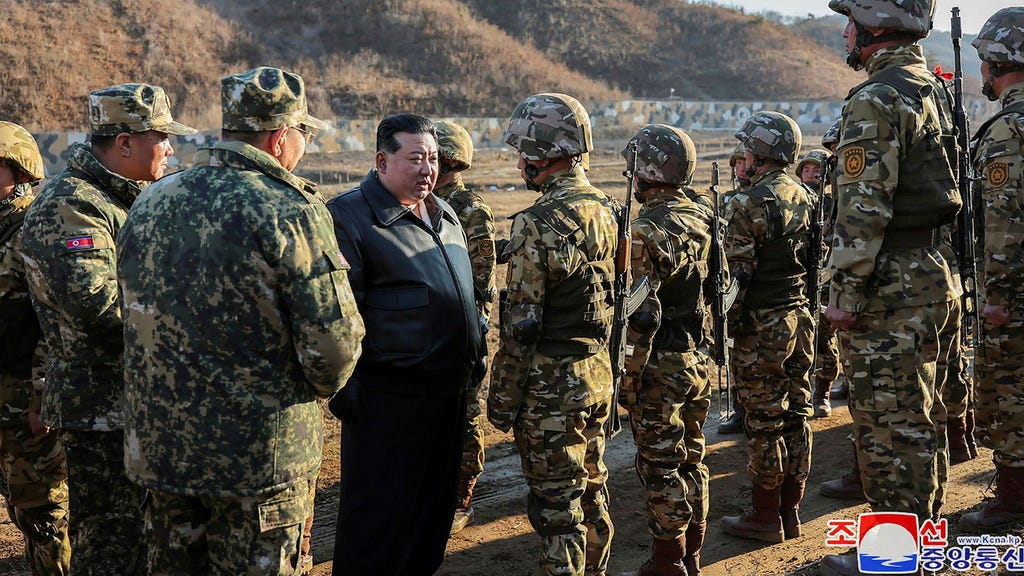The Alleged Presence and Casualties of North Korean Soldiers in Kursk: A Deep Dive into Ukrainian Intelligence Reports and Battlefield Accounts
Ukrainian military intelligence reported a significant event over the weekend: the alleged death or injury of at least 30 North Korean soldiers during fighting in Russia’s Kursk region. This claim, made on Monday, has garnered attention and raised questions about the involvement of North Korean troops in the ongoing conflict. The Pentagon has acknowledged indications of North Korean casualties, both injured and killed, in recent days. John Kirby, spokesperson for the U.S. National Security Council, suggested the number likely involves dozens of soldiers. This information, while not definitively confirmed, paints a complex picture of the evolving dynamics in the conflict zone.
Several Ukrainian soldiers have provided firsthand accounts to the Washington Post, describing the alleged North Korean soldiers’ actions as clumsy and tactically unsound, making them easy targets on the battlefield. Three soldiers recounted witnessing large groups of North Korean soldiers "flooding" across open fields, seemingly unaware of their vulnerability to Ukrainian observation and fire. This tactic contrasts sharply with the more cautious approach typically employed by Russian soldiers, who tend to utilize smaller, more dispersed formations and seek cover to avoid detection and minimize exposure to enemy fire.
According to Ukrainian intelligence, these North Korean soldiers were reportedly deployed as reinforcements to bolster Russian forces in anticipation of further fighting. The alleged casualties occurred near the Russian villages of Plechovo, Vorobzja, and Martynovka in the Kursk region. The Ukrainian soldiers interviewed by the Washington Post emphasized that the behavior of these troops on the battlefield clearly distinguished them from Russian soldiers. Their movements, formations, and apparent disregard for concealment raised suspicions and led to the conclusion that they were not part of the regular Russian military.
The alleged North Korean soldiers’ tactical approach, as described by Ukrainian sources, seemed surprisingly ineffective. Moving in large, tightly packed groups across open terrain made them highly visible and vulnerable to Ukrainian drones, artillery, and other weaponry. One Ukrainian commander estimated that between 40 and 50 soldiers were observed traversing the field in this manner. This lack of tactical awareness, if accurate, would suggest a significant disparity in training and battlefield experience compared to seasoned Russian forces.
A Ukrainian drone operator named Artem offered further details, claiming that some of the North Korean soldiers were carrying backpacks, presumably containing ammunition and supplies, while others carried weapons. Intriguingly, upon noticing the presence of Ukrainian drones overhead, instead of seeking cover or retreating, they reportedly opened fire on the unmanned aerial vehicles. This response further contrasted with typical Russian behavior, which involves evasive maneuvers or seeking protected positions to engage drones. These accounts, while anecdotal, contribute to a narrative of unpreparedness and tactical naivety on the part of the alleged North Korean contingent.
Reports of North Korean involvement in the Kursk region first emerged in late October, with claims that up to 12,000 soldiers had been sent to the area to integrate with the Russian army. This coincided with a Ukrainian offensive in early August, which resulted in the capture of parts of the Kursk region. The Ukrainian president, Volodymyr Zelenskyy, has also publicly stated that a “significant number” of North Koreans are fighting in Kursk, further fueling speculation about the extent of North Korea’s involvement in the conflict. The convergence of these reports and battlefield accounts raises important questions about the evolving nature of the conflict and the potential implications of external actors participating in the fighting.
The presence and alleged casualties of North Korean soldiers in the Kursk region, as reported by Ukrainian intelligence and corroborated by battlefield accounts from Ukrainian soldiers, present a complex and evolving situation. While the exact number of casualties and the specific details of their involvement remain unverified, the consistent narrative of distinct tactical behavior and significant losses suggests a noteworthy development in the ongoing conflict. The alleged deployment of North Korean troops raises questions about the extent and nature of international involvement in the conflict and the potential ramifications for regional stability. Further investigation and independent verification are crucial to fully understand the implications of these developments and their potential impact on the trajectory of the conflict.














